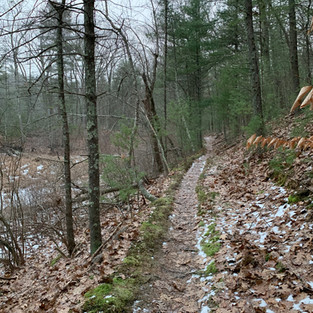Jan. 3. Winter fruit & warming, reddish glow - To Walden and Andromeda Ponds
- Nature Seeker
- Jan 3, 2021
- 2 min read
Updated: Jan 27, 2024
Jan. 3, 1852.
Oak-apples are a winter fruit. The leaves being gone, they are now conspicuous and shine in the sun. Some trees are quite full of them. Do they not suggest that all vegetable fruit is but the albumen about young animal life? The ground has been bare for some days, and the weather warm.
-H.D.T.
Jan. 3., 1858.
The slosh on Walden had so much water in it that it has now frozen perfectly smooth and looks like a semitransparent marble. Being, however, opaque, it reminds one the more of some vast hall or corridor's floor, yet probably not a human foot has trodden it yet. Only the track-repairers and stokers have cast stones and billets of wood on to it to prove it.
Going to the Andromeda Ponds, I was greeted by the warm brown-red glow of the Andromeda calyculata [Leatherleaf] toward the sun. I see where I have been through, the more reddish under sides apparently being turned up. It is long since a human friend has met me with such a glow.
-H.D.T.
Jan. 3, 1860 P.M. — To Baker’s Bridge via Walden.
When a locomotive came in, just before the sun set, I saw a small cloud blown away from it which was a very rare but distinct violet purple.
-H.D.T.

Jan. 3, 2021.
About an hour before dusk, I find my path to Walden Pond via an old fire road. I travel amid a light pellet-like snowfall to the shore at Ice Fort Cove. Walden’s water is clear, still and completely unfrozen. After tracing Walden’s shore, I pass over the tracks to the first and largest of the Andromeda Ponds and immediately notice its warm reddish hue. It is here among the fallen oak leaves that I spot an “oak-apple” about an inch wide. These hollow balls, I later learn, are formed by gall wasp larvae developing within oak leaf buds. Wandering down among the other ponds, I find my way across some ice to examine the reddish plants, including the leather-leaf shrub, the common name of Thoreau's Andromeda calyculata. I feel great delight in finding the name-sake plant of these ponds! I also identify sheep laurel and magellan’s peatmoss, peeking from under the snow.
With the falling snow changing to a more steady cascade of lighter flakes, I circle back home, turning first through a grove of tall white pines, and back to the fire road, where I am startled to see a white-tailed deer, and then another. Before I exit the woods, I stop by Deep Cut, so-named by Thoreau to describe the location of the railroad bed sliced into the hillside to level the track. At twilight, an MBTA train to Boston passes, with its headlight first and then red taillight gleaming trailing behind. Arriving home to hear my family's cheerful greeting, my heart is feels aglow with gratitude.



















Comments